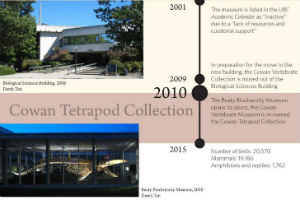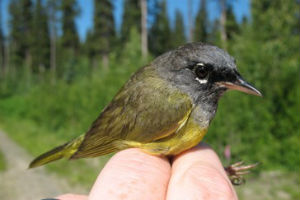The Cowan Tetrapod Collection was founded in 1943, but the oldest specimen dates from 1849. With over 40,000 specimens representing over 2,500 species, the collection is the second-largest scientific collection of birds, mammals, reptiles, and amphibians in British Columbia. It holds large, representative samples of nearly all species—and most subspecies—of British Columbia’s terrestrial vertebrates and marine mammals. Important specimens representing global biodiversity are also housed here including the rare red panda, endangered Vancouver Island marmot, and even extinct species, such as the passenger pigeon.
At one time called the Cowan Vertebrate Museum, the collection was named after the museum’s first curator, Dr. Ian McTaggart-Cowan. In its early years, it grew through important donations such as the Kenneth Racey collection of over 4,200 birds and mammals, the H.R. MacMillan ornithological collection, and the zoological collections of W.S. Maguire and J. Wynne. Although mainly used for research, the collection also holds teaching specimens used by educators, artists, and others throughout the Lower Mainland.
The Cowan Tetrapod Collection specimens are listed on our database: you can search our avian, herpetology and mammals collections. Our specimens are also available on VertNet.
If you would like to access the Cowan Tetrapod Collection for research purposes please contact Ildiko Szabo with reference to birds, and Chris Stinson with reference to mammals, reptiles, and amphibians (contact us).
Cowan Tetrapod Collection Timeline and History
The Cowan Tetrapod Collection contains specimens which date back to the mid-1800s.
Cowan Tetrapod Collection Contributors
Citizen scientists, game wardens, researchers plus their students and even a few bonafide professional collectors explored western Canada plus other




